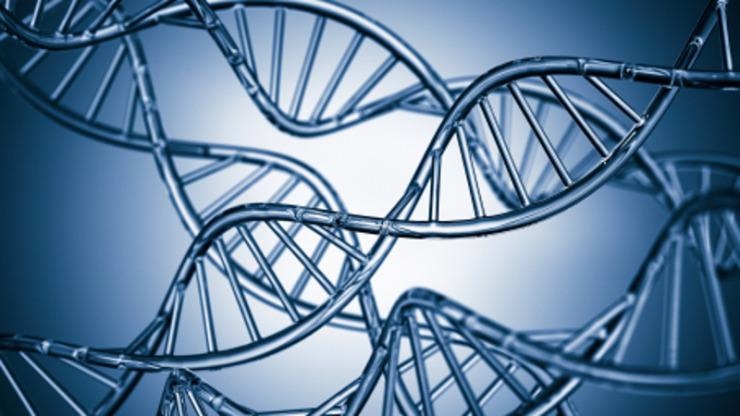According to biomedical engineers at Duke University, the physical mechanism that enables high doses of antibiotics to encourage the transmission of antibiotic resistance across bacteria is now identified.
 An overabundance of jumping genes called transposons may be the mechanism that causes high levels of antibiotics to cause widespread transfer of resistance. Image Credit: Duke Pratt School of Engineering
An overabundance of jumping genes called transposons may be the mechanism that causes high levels of antibiotics to cause widespread transfer of resistance. Image Credit: Duke Pratt School of Engineering
The source of the problem, they claim, is an overpopulation of “jumping genes,” or transposons, which transport resistance genes from the cell’s source code to plasmids that shuttle between cells.
The findings were published in the journal Nature Ecology & Evolution on March 28th, 2022.
There’s a lot of evidence that suggests human pathogens likely pick up antibiotic resistance from other species living in the natural environment. Intuitively, it makes sense that high levels of antibiotics in these environments are facilitating the jumping of resistance genes from chromosomes to plasmids so that they can spread, but the underlying mechanism has never been directly tested. That’s where our work comes in.”
Lingchong You, Professor, Biomedical Engineering, Duke University
It is no surprise that the development of antibiotic resistance in human infections has paralleled the increased use of antibiotics in large-scale industrial enterprises such as farming and manufacturing. While the genes that offer resistance to many infections seem to be relatively new, some have been found in bacteria living in particular wild habitats for millions of years.
With research showing that high doses of antibiotics promote resistance both within and between bacterial species, it is indeed straightforward to conclude that human infections have obtained these resistance genes from the environment because of rising antibiotic levels in the environment.
You stated that while the cause and effect appear to be evident, research has never definitively identified the underlying mechanisms. Resistance genes are carried between cells by plasmids, which are tiny, free-floating DNA bundles. However, according to You’s own study, the presence of antibiotics has no effect on the rate at which plasmids carry out these gene swaps. What, then, the basic force is driving this natural selection, the researchers wondered.
This mystery method could be antibiotic-mediated selection on “jumping genes,” termed transposons that transmit resistance genes from the cell’s chromosomes to the plasmids, according to new research by You and his postdoc Yi Yao.
Yi’s experiments were designed to test this possible pathway that explains how different pathogens actually get resistance from environmental species. And he demonstrated that not only is this possible, it’s also very likely.”
Lingchong You, Professor, Biomedical Engineering, Duke University
Transposons are little fragments of DNA that bounce about inside a cell on a regular basis. They can jump from one location to another within a cell’s central genetic database, as well as from the DNA database to broader plasmids capable of traversing between cells, and vice versa. This can result in several copies of the same genetic blueprints on chromosomes or plasmids.
Yao exposed cells tolerant to different types of antibiotics to a range of concentrations of that antibiotic in a set of experiments. As the concentration grew, the cells carrying plasmids containing more copies of the resistance genes invariably began to outcompete their peers.
All the curves looked almost exactly the same. It’s actually surprising just how robust the trend is.”
Lingchong You, Professor, Biomedical Engineering, Duke University
According to the researchers, the number of copies of transposons on plasmids influences as many antibiotic resistance proteins the cell produces. That production comes at a cost in terms of energy, and it is not until the number of antibiotics produced reaches a specific threshold that the extra energy consumed becomes a desirable characteristic.
However, it is unclear whether the increased antibiotic levels are driving the resistance transposons within these cells to become much more active. Instead, it shows that if transposon jumping is already taking place, antibiotic selection will always enhance the population of resistance genes that have hopped to plasmids.
The number of antibiotics needed to start driving this selection, according to the researchers, varies substantially depending on the species and the medications in the issue. However, in today’s natural habitats, this range is not rare, potentially creating the pressure needed for human diseases to pick up resistance genes more frequently.
“We’re now working to prove that this dynamic is actively occurring in real environments like hospitals and not just in a Petri dish,” You said. “We also want to see if we can use this knowledge to selectively dial in the flow of genes to optimize bacteria engineered for industrial uses.”
Source:
Journal reference:
Yao, Y., et al. (2022) Intra- and interpopulation transposition of mobile genetic elements driven by antibiotic selection. Nature Ecology & Evolution. doi.org/10.1038/s41559-022-01705-2.